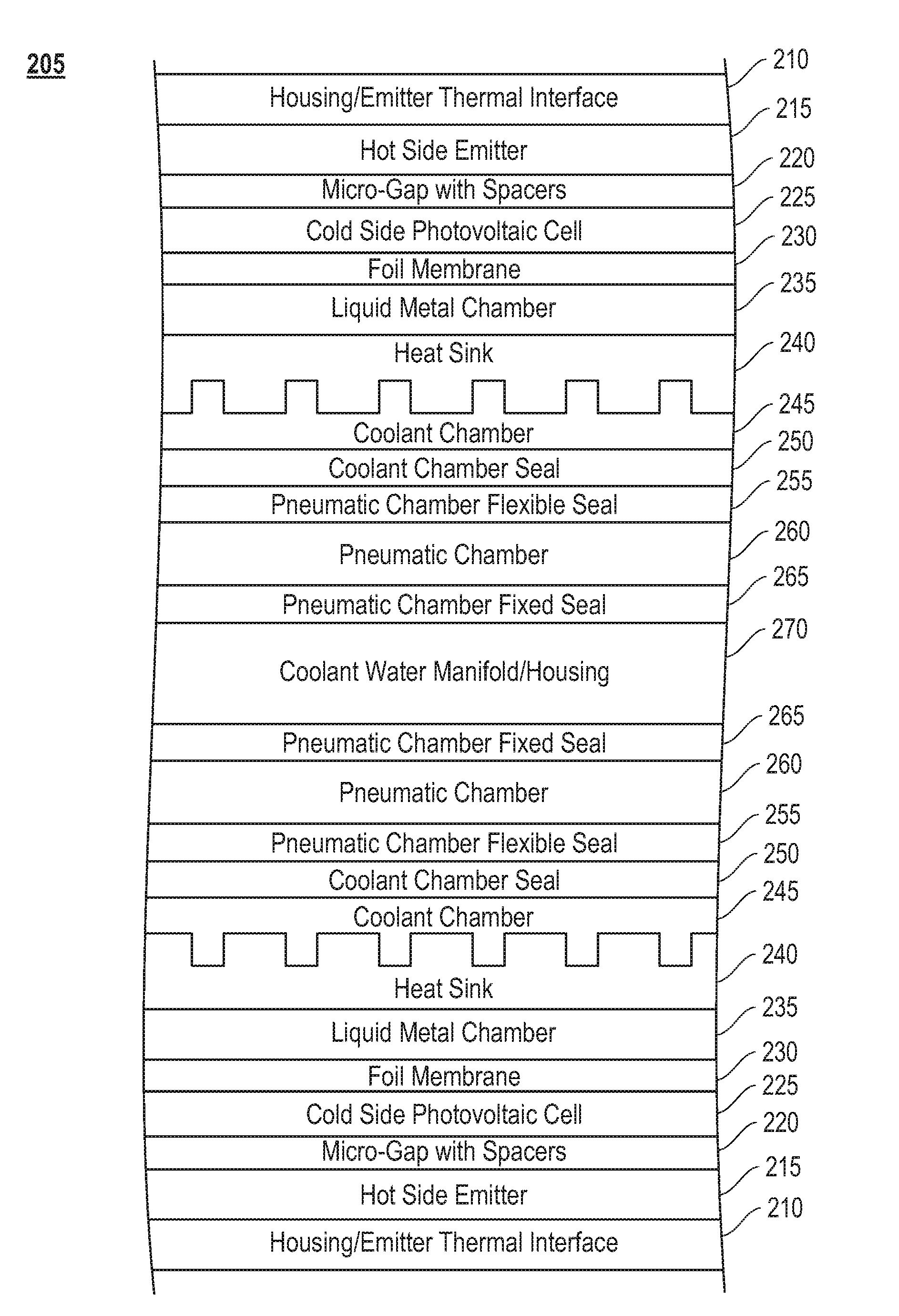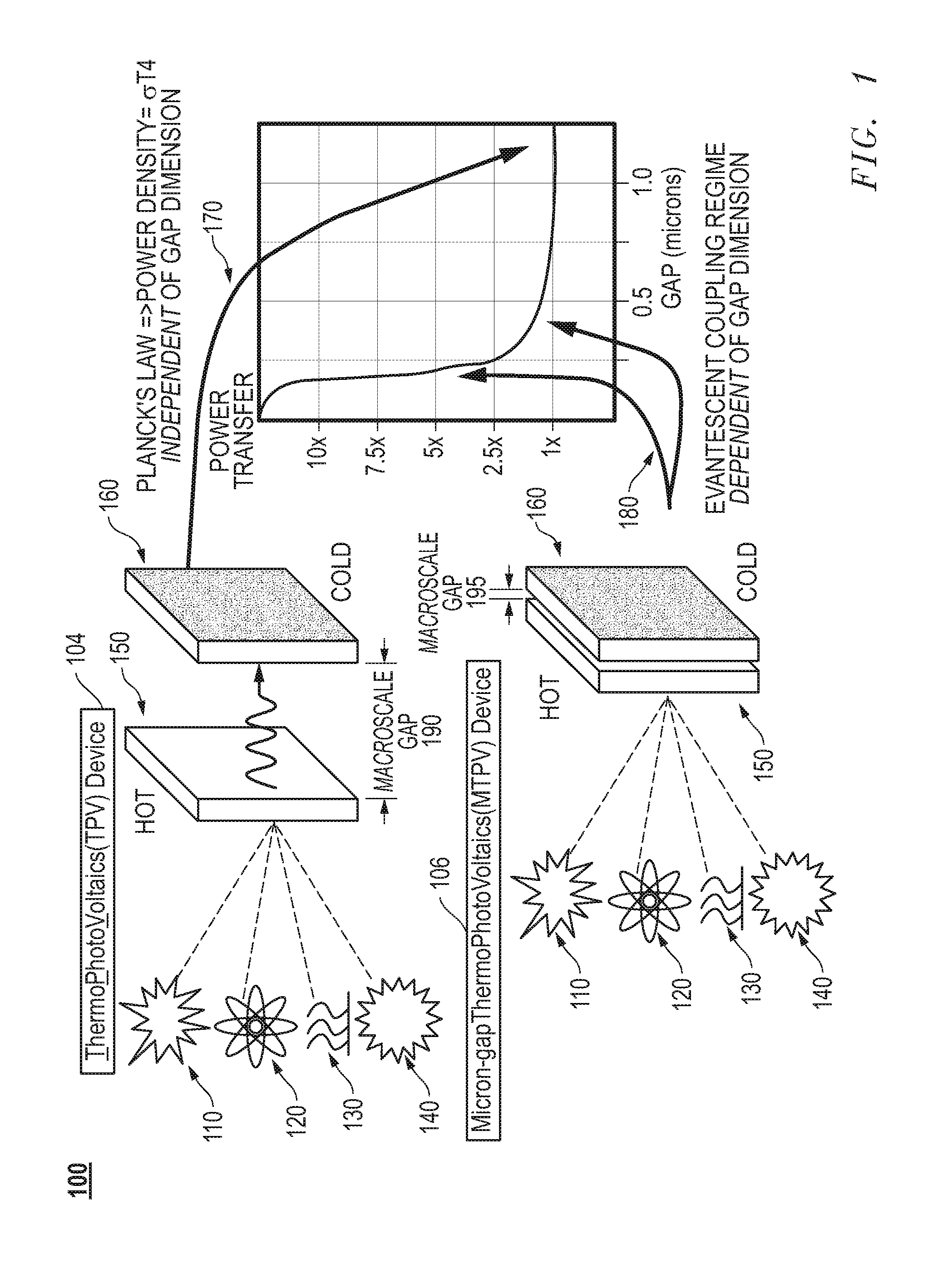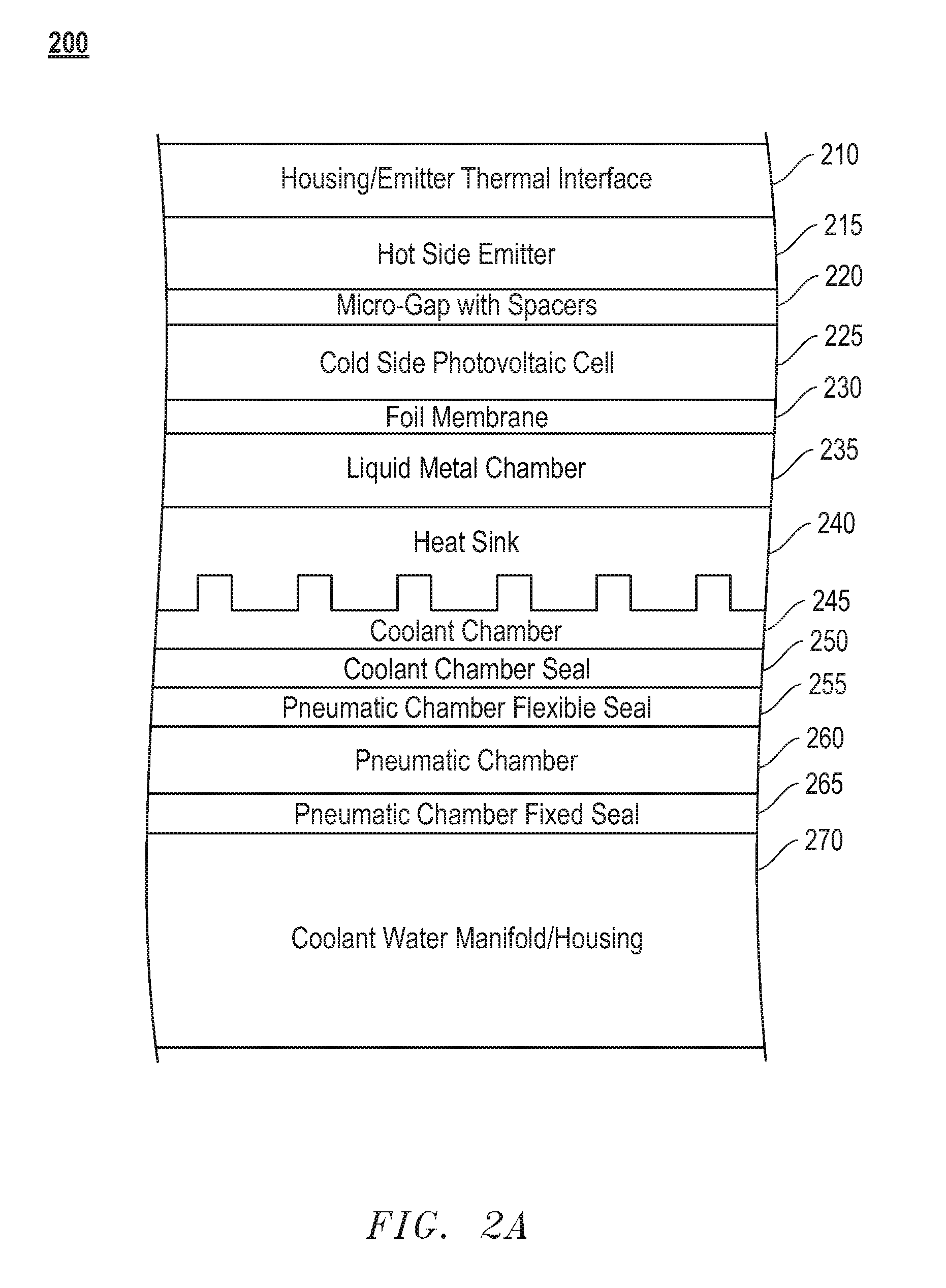Micro-Gap Thermal Photovoltaic Large Scale Sub-Micron Gap Method and Apparatus
a thermal photovoltaic and micro-gap technology, applied in thermal-pv hybrid energy generation, pv power plants, semiconductor devices, etc., can solve the problems of uncontrollable power output variance, temperature increases, and obstacles to its practical use, and achieve the effect of convenient manufacturing
- Summary
- Abstract
- Description
- Claims
- Application Information
AI Technical Summary
Benefits of technology
Problems solved by technology
Method used
Image
Examples
embodiment 200
[0048]Turning to FIG. 2A, FIG. 2A illustrates an embodiment 200 of a single-sided MTPV device. The embodiment includes a thermal interface 210 for conducting heat between housing that is exposed to a high temperature and a hot side emitter 215. The hot side emitter 215 is separated from a cold side photovoltaic cell 225 by a micro-gap that is maintained by spacers 220. A foil membrane 230 is positioned between the cold side photovoltaic 225 and a chamber 235 containing a liquid metal that is maintained under controlled pressure. This pressurized chamber 235 ensures that the hot side emitter 215 and thermal interface 210 is maintained in close contact with the housing over a wide temperature range. Adjacent to the liquid metal chamber 235 is a heat sink 240 that is cooled by a continuous flow of coolant in a coolant chamber 245. The coolant chamber 245 is separated from a pneumatic chamber 260 by a coolant chamber seal 250 and a pneumatic chamber flexible seal 255. The pneumatic cham...
embodiment 205
[0049]Turning to FIG. 2B, FIG. 2B illustrates an embodiment 205 of a two-sided MTPV device. The two-sided MTPV device includes the structure described above in relation to FIG. 2A and an additional structure that is an inverted image of that shown in FIG. 2A attached to the common coolant water manifold 270. This structure enables the collection of heat from both sides of an MTPV device.
embodiment 300
[0050]Turning to FIG. 3, FIG. 3 illustrates an embodiment 300 that shows the operation of the MTPV device. The MTPV device 305 is exposed to radiant and convective heat flux 310, which heats the outer surface and the hot side of the hot side / cold side pair 320, 330. A vacuum is maintained in the interior of the MTPV device 305 and the cold side photovoltaic cell is cooled from the inside by circulating water 340, 350. Output power 360, 370 is obtained from the device 305.
PUM
 Login to View More
Login to View More Abstract
Description
Claims
Application Information
 Login to View More
Login to View More - R&D
- Intellectual Property
- Life Sciences
- Materials
- Tech Scout
- Unparalleled Data Quality
- Higher Quality Content
- 60% Fewer Hallucinations
Browse by: Latest US Patents, China's latest patents, Technical Efficacy Thesaurus, Application Domain, Technology Topic, Popular Technical Reports.
© 2025 PatSnap. All rights reserved.Legal|Privacy policy|Modern Slavery Act Transparency Statement|Sitemap|About US| Contact US: help@patsnap.com



